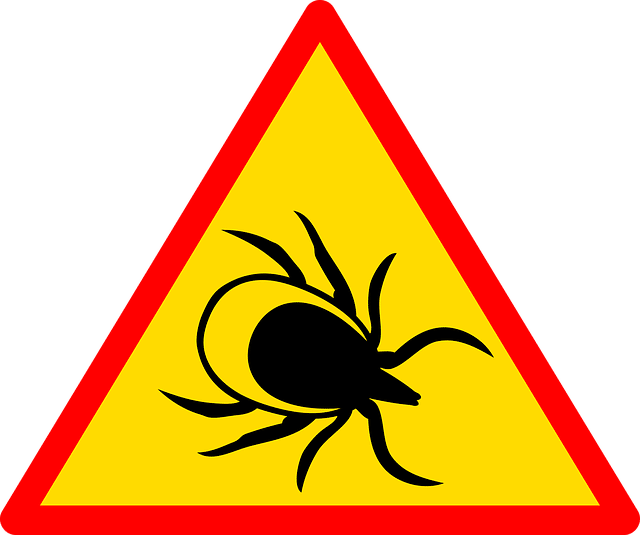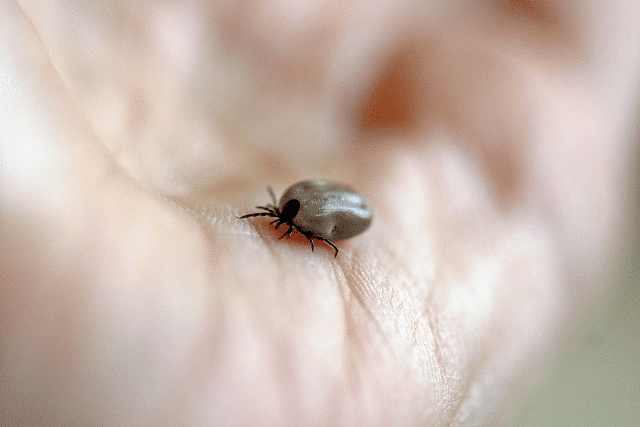Have you wondered how to remove a tick from a dog?
Ticks can be a common problem for dogs, especially during the summer months. These small arachnids attach themselves to a dog’s skin and feed off their blood. Not only are they unsightly, but they can also transmit diseases to your pup. It is important to know how to safely remove a tick from your dog to prevent further complications.
Step 1: Preparation
Before the tick removal process, you need to gather the necessary tools. You will need a pair of fine-tipped tweezers, alcohol, and gloves (optional). It is essential to wear gloves as ticks carry diseases that can be transmitted to humans as well.
Step 2: Location
Locating the tick on your dog is the next step. Ticks usually attach themselves in areas such as the armpits, ears, and between the toes. However, they can attach themselves anywhere on your dog’s body. Check your dog thoroughly, and if you find a tick, do not panic.
Step 3: Removal
Using the tweezers, grasp the tick as close to your dog’s skin as possible. Gently but firmly, pull the tick straight out, being careful not to twist or crush it. If the tick’s head is left behind, don’t worry; it’s not uncommon. Just remove it as you would a splinter.
Step 4: Disposal
Once you have removed the tick, place it in a container with alcohol to kill it. Do not crush it as this can spread bacteria from the tick’s body. Avoid touching the tick with your bare hands.
Step 5: Aftercare
Clean the area where the tick was attached with alcohol or soap and water. Keep an eye on your dog for any signs of infections or illnesses. Some common signs include fever, lethargy, and loss of appetite. If your dog shows any of these symptoms, take them to the vet immediately.

Is it OK to Pull a Tick Off a Dog?
Ticks are tiny but dangerous parasites that attach to the skin of dogs to feed on their blood. They are prevalent in wooded areas, tall grass, and bushes, and can transmit diseases like Lyme disease, ehrlichiosis, and anaplasmosis, among others. Therefore, it’s important to check your dog regularly for ticks and remove them as soon as possible. But is it safe to pull a tick off your dog, and how you should be removing ticks? Let’s explore.
Yes, it’s generally safe to pull a tick off a dog if you do it correctly. Unattached ticks are easy to remove, but you should avoid using your fingers and tweezers. Instead, use a tick removal tool, which is designed to grasp the tick’s head and remove it without leaving the mouthparts lodged in the skin. Popular tick removal tools include the Tick Twister, TickKey, and Tick Plier.
If the tick is already attached to your dog’s skin, it’s more challenging to remove, but you shouldn’t panic. First, disinfect the area around the tick with alcohol or soap and water. Then, use a tick removal tool to grasp the tick’s head as close to the skin as possible and gently twist it counterclockwise until it comes out. Avoid squeezing the tick’s body or using heat, petroleum jelly, or other home remedies. These methods may cause the tick to regurgitate its contents into your dog’s bloodstream, increasing the risk of infection.
Once you remove the tick, inspect the bite site for any remaining mouthparts or signs of infection. If you notice redness, swelling, or discharge, contact your veterinarian for advice and possible treatment. Keep in mind that some dogs may have an allergic reaction to tick bites, which can lead to hives, lethargy, and anaphylactic shock in severe cases. Therefore, monitor your dog closely after removing a tick and seek medical attention if necessary.
To prevent tick infestations, avoid areas where ticks are common, use tick repellent products like sprays, collars, and spot-on treatments, and bathe your dog regularly with a tick-specific shampoo, if recommended by your veterinarian. You can also consider vaccinating your dog against Lyme disease, which is the most common tick-borne disease in dogs. Consult your veterinarian for more information about tick prevention and control.
In summary, pulling a tick off a dog is generally safe as long as you use a tick removal tool and follow proper techniques. Don’t try to remove ticks with your fingers or other tools, as this may cause injury or infection to your dog. Inspect the bite site after removing a tick and contact your veterinarian if you notice any symptoms or concerns. Remember to take preventive measures to reduce your dog’s risk of tick-borne diseases.
Tick removal is an important part of dog care, but it should be done correctly to avoid complications. Although pulling a tick off a dog may seem scary, there are safe and effective ways to do it, such as using a tick removal tool. By following a few simple steps, you can protect your dog from tick-borne diseases and enjoy outdoor activities together. So, next time you find a tick on your dog, don’t panic, and be prepared to remove it quickly and safely.

What Kills Ticks on Dogs Instantly? How to Prevent Ticks
Ticks are small, blood-sucking insects that can cause a range of serious illnesses, including Lyme disease, Rocky Mountain spotted fever, and ehrlichiosis, among others. These diseases can be life-threatening for dogs, which is why it’s essential to take preventive measures to keep ticks away. In this guide, we’ll explore what kills ticks on dogs instantly to help you protect your furry friend from these dangerous pests.
Use tick repellent products
One of the most effective ways to kill ticks on dogs instantly is to use tick repellent products. There are numerous products available in the market, including sprays, collars, and topical solutions, which you can use to repel ticks and other parasites. These products contain ingredients like permethrin, fipronil, and pyrethroids, which are toxic to ticks and can kill them on contact. However, it’s essential to choose a product that’s safe for your dog’s age, weight, and health condition. Consult your vet before using any tick repellent product on your pet.
Check your dog for ticks regularly
Another crucial step in preventing tick infestation on your dog is to check him regularly for ticks. Ticks can attach themselves to any part of your dog’s body, but they prefer areas with less fur, such as the ears, groin, and paws. To prevent tick bites, use a fine-toothed comb to comb through your dog’s fur, checking for ticks along the way. If you find a tick, remove it immediately using tweezers or a tick removal tool. Make sure to grasp the tick’s head and pull it out completely to prevent any infection.
Keep your yard tick-free
Ticks can thrive in outdoor environments, such as wooded areas, tall grass, and leaf litter. If your yard has these features, it’s essential to keep it clean and tick-free. Keep your lawn mowed short, remove leaf litter and debris, and clear out any tall grass or overgrown brush. You can also use natural tick repellents like cedar chips, neem oil, or diatomaceous earth in your yard to prevent tick infestation.
Use tick preventives year-round
Ticks can be active year-round, depending on the climate and the location. For instance, ticks are active in warmer seasons in some areas but can be active year-round in others. Therefore, it’s essential to use tick preventives on your dog year-round to keep him safe from these pests. Consult your vet on the proper tick preventive product and regimen for your dog’s location and age.
Consult your vet about tick-borne diseases
Finally, it’s crucial to consult your vet about tick-borne diseases if your dog develops symptoms. Tick-borne diseases can cause long-term health problems for your dog, so it’s vital to watch for any signs of illness, such as fever, fatigue, loss of appetite, or joint pain. If you suspect your dog has a tick-borne illness, visit your vet immediately for proper treatment.
Ticks can cause serious health problems for your furry friend, so it’s essential to take preventive measures to keep them away. By using tick repellent products, checking your dog regularly, keeping your yard tick-free, using tick preventives year-round, and consulting your vet about tick-borne diseases, you can protect your dog from tick infestation and keep him healthy and happy. Remember to be mindful of the products you use and always consult your vet for professional advice.

Kate’s K9 Pet Care
To sum up, Kate’s K9 is the perfect place for pet owners searching for a convenient way to keep their pets healthy and groomed. Take the hassle out of making sure your pet is taken care of and call us now Don’t delay any longer. Kate’s K9 is the leading online destination for all of your pet needs. Let us help you make sure your pet stays healthy and happy, so contact us today!
Conclusion:
Removing a tick from your dog is a simple task that can be done quickly and safely. However, it is important to do it right as ticks can transmit diseases. Make sure to wear gloves, use proper tools, and dispose of the tick carefully. After removal, take note of any signs of infection or illness and seek veterinary help if necessary. With these steps in mind, you can equip yourself with the knowledge needed to keep your furry friend healthy and tick-free!







